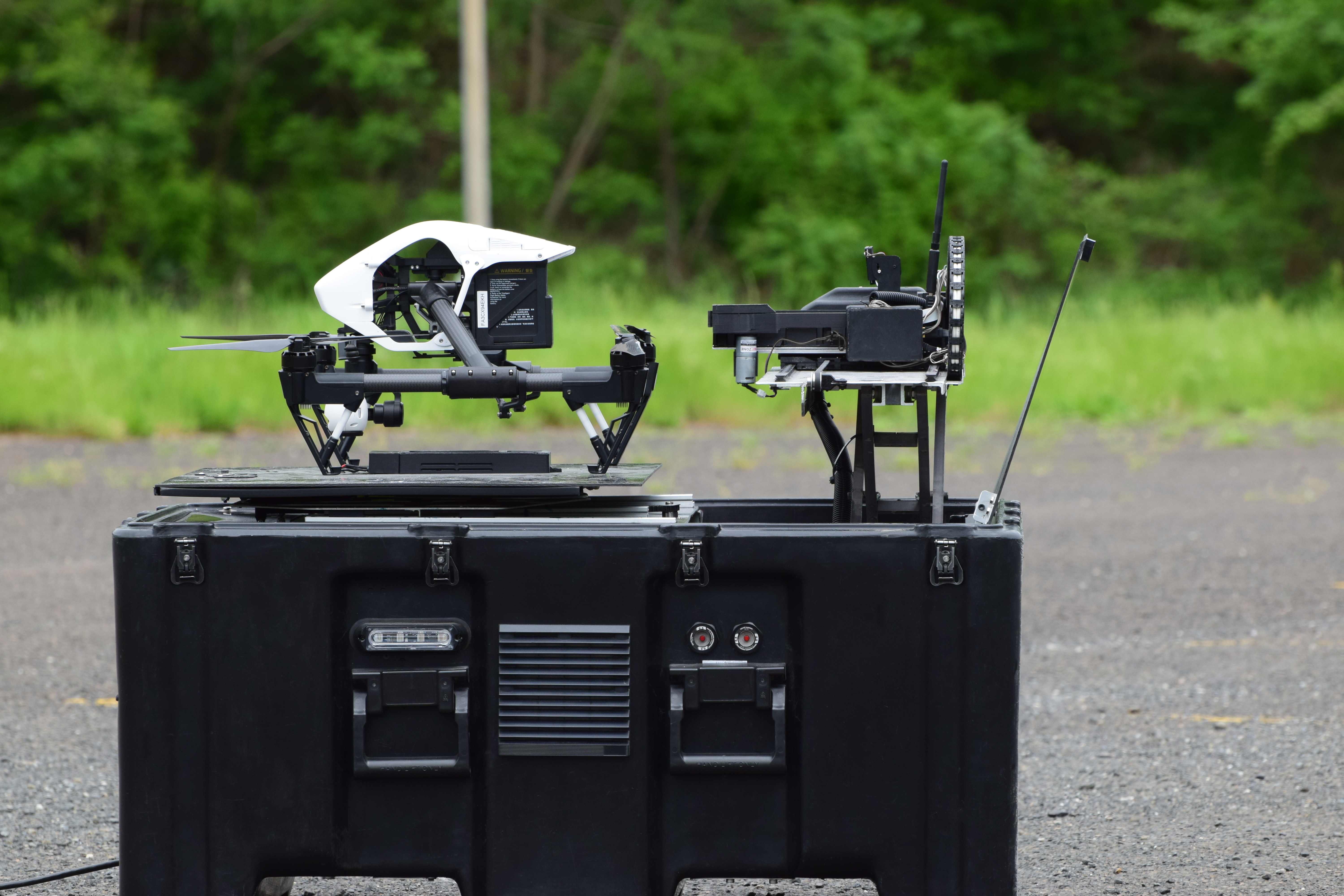Designing a Home for Drones on the Go
-
-
slice.mit.edu
Filed Under
Recommended

Damon Henry ’10 has been building hobby airplanes since he was a kid, so when drones started infiltrating technology and airspace, they felt distinctly familiar—as did some of the challenges that came with them. “The worst part about the remote control planes was being so excited to use them, and then having to wait hours for the battery to charge,” he says.
Drones face the same issue. Most commercial drones require four hours of battery charge for just 15 minutes of use. That’s why Henry and fellow MIT AeroAstro alumni Adam Mohamed ’10 and Brent McLaughlin ‘10 launched ASYLON in 2015, a drone support system that allows drones to stop, swap batteries with the help of robotics, and continue their mission.
ASYLON was spurred by more than just a childhood frustration with batteries. Henry, Mohamed, and McLaughlin were working in aerospace industries—Henry and Mohamed at Boeing and McLaughlin at the The Johns Hopkins University Applied Physics Laboratory—when they noticed something missing in the burgeoning drone business. “We saw that everyone was developing new types of drones, but not much to support them,” Henry says. “I learned at Boeing that half of the engineers will work on the actual aircraft while a very large portion of engineers focus on all the support infrastructure like avionics and ground equipment that you don’t think about but need for an aircraft to operate—no one was doing that in the drone space,” Henry says.
With an eye on the problem of power for drones, Henry and Mohamed left Boeing to start their own company, wooing McLaughlin along the way. “Brent was a little hesitant but we kept working on him—inviting him to little hackathons to helps us until he got invested enough to join us full time,” Henry laughs.
The trio used their Course 16 expertise to design what they call a DroneHome—a battery storage device encased in a rugged Pelican box that can remain anywhere needed outdoors, waiting for a drone in need. The DroneHome uses an automated system to remove a depleted battery from a drone and replace it with a charged one—no human required. The DroneHome is device agnostic, working with most drones on the market. Henry says the DroneHome is ideal for industries that rely on long drone flight capability.
“Currently, if you want to fly a drone for security at something like an industrial site, you don’t want to have a manned guard sitting there just to replace the battery ,” he says. “Ideally, you want the drone to supplement the guards that are there, not the other way around,” he explains. For drones completing trips over long distances, multiple homes spaced out over a set distance can offer the option of swapping batteries along the way.
ASYLON has completed multiple pilots with their product, hoping to expand on the offerings of the DroneHomes to meet customer needs, including adding remote data sharing systems, and a system to load and unload drone cargo. “We’re focused on power, payload, and data,” Henry says.
As ASYLON moves closer to their commercial debut, the team of engineers is prepared for the transition from design to marketing. “MIT taught us how to learn,” Henry says. “At MIT, you had to struggle through PSETs before you learned lessons in lecture—startups are like that too. Having the confidence to say ‘I have enough information, I can work through this’ is critical.”







